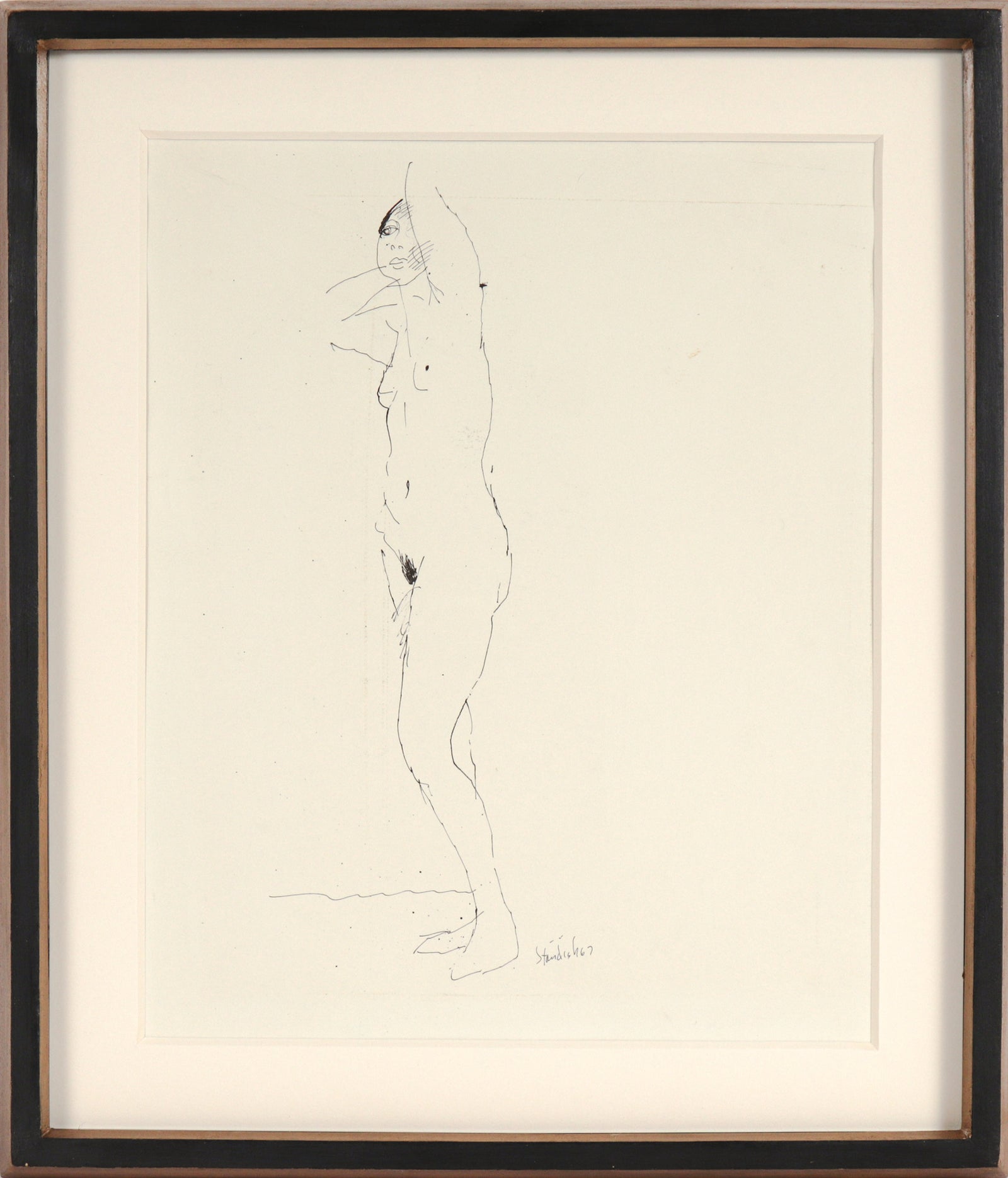Explore | Collect | Design

Schuyler Standish
| Previous Artist | Next Artist |
Schuyler Standish (1927-2010)

-
Schuyler Standish was born in 1927 in Los Angeles, California. He began studying violin at age 3, later attending UCLA at age 13 to study music. Standish began acting at age 6. He studied tap dancing at the Ethel Meglin School for Kiddies, Shirley Temple’s alma mater. His first motion picture was “Shipmates Forever,” in 1933, starring Dick Powell and Ruby Keeler. He later appeared in “Blood and Sand” (1941) with Tyrone Power and Rita Hayworth, and “Melody For Three” (1941) with Fay Wray and Jean Herscholt. Standish’s musical virtuosity was a special element of his acting career, and he showcased his talent as a violinist in “Melody For Three” with a violin solo. In 1944, Standish enlisted in the Air Force and spent the remainder of World War II entertaining troops in Bobby Byrne’s band.

In the early 1950s, Standish further developed his artistic skills and dedicated himself to self-taught visual art. His first one-man show was held at Falk-Raboff Gallery in Los Angeles in 1954. Standish lived in the Hollywood Hills and in Highland Park, and used the local hillside views as inspiration for his paintings. Standish began teaching art in 1972 at Flintridge Sacred Heart Academy. He retired in 2002. He also exhibited at LACMA (1959) in a group show and held a one-man show at the Riverside Art Museum (2010) just before his passing.
In his 1962 review of a Standish one-man show, the Los Angeles columnist Arthur Millier said: “Schuyler Standish, at the Raboff Gallery, 35, husband, father, a librarian at USC, is an unfashionable loner. Untouched by the dernier cri, he has worked his way through Cezanne and El Greco, among other masters and this time showed a flock of small, darkly glowing pictures. Football muddles, lovers and best of all stormy landscapes. Like Raboff, I’m betting on him.”
An Excerpt from The Riverside Art Museum Show Notes in 2010
“Standish’s landscapes, acknowledging the plein-air tradition, clearly recapitulate the lessons of Paul Cézanne. Standish painted in the Hollywood Hills and Highland Park, rendering the houses and streets nestled on the verdant mountainsides as Cézanne might have. At the same time, Standish depicts space with dramatic recessional structures reminiscent of the Bay Area Figurative painters.
As a figurative painter and draftsman himself, Standish’s abstractions reveal a wide familiarity with modernist examples such as Picasso’s Cubism, Dali’s and Tanguy’s Surrealism, the Bauhaus figuration of Klee, and the American approaches of Diebenkorn and Guston. However, his work goes beyond even these well-known examples to more widely embrace the entire modernist canon, from Futurism and Dada to Constructivism and Hard-edge painting.
As such, they may constitute his most distinctive achievement, showing him to be a master of texture, tone, and line with the ability to elaborate upon the simplest of arrangements and to elucidate the most complex compositions with a self-possessed forthrightness.”
Peter Frank, Senior Curator at the Riverside Art Museum
“Schuyler Standish was a thoughtful and caring teacher hiding behind a very dry sense of humor. He opened up the world of art to hundreds of young women in his many years teaching painting, drawing, and art history at my high school. I’m so grateful I knew him—both because of his skill as an artist and teacher, but even more so because of his kind heart.”
- Marlena Byrne (a former art student)
Stylized City with 1920-30s Car
20th Century Ink
#C4499 Schuyler Standish (1927-2010) Sold $595
20th Century Ink
#C4499 Schuyler Standish (1927-2010) Sold $595
Sold
Colorful Shapes & Forms
20th Century Mixed Media
#C4500 Schuyler Standish (1927-2010) Sold $495
20th Century Mixed Media
#C4500 Schuyler Standish (1927-2010) Sold $495
Sold
Colorful Floral Stil LIfe
20th C. Watercolor & Mixed Media
#C4536 Schuyler Standish (1927-2010) $545
20th C. Watercolor & Mixed Media
#C4536 Schuyler Standish (1927-2010) $545
Subscribe
Sign up to learn about new collections and upcoming events
















































